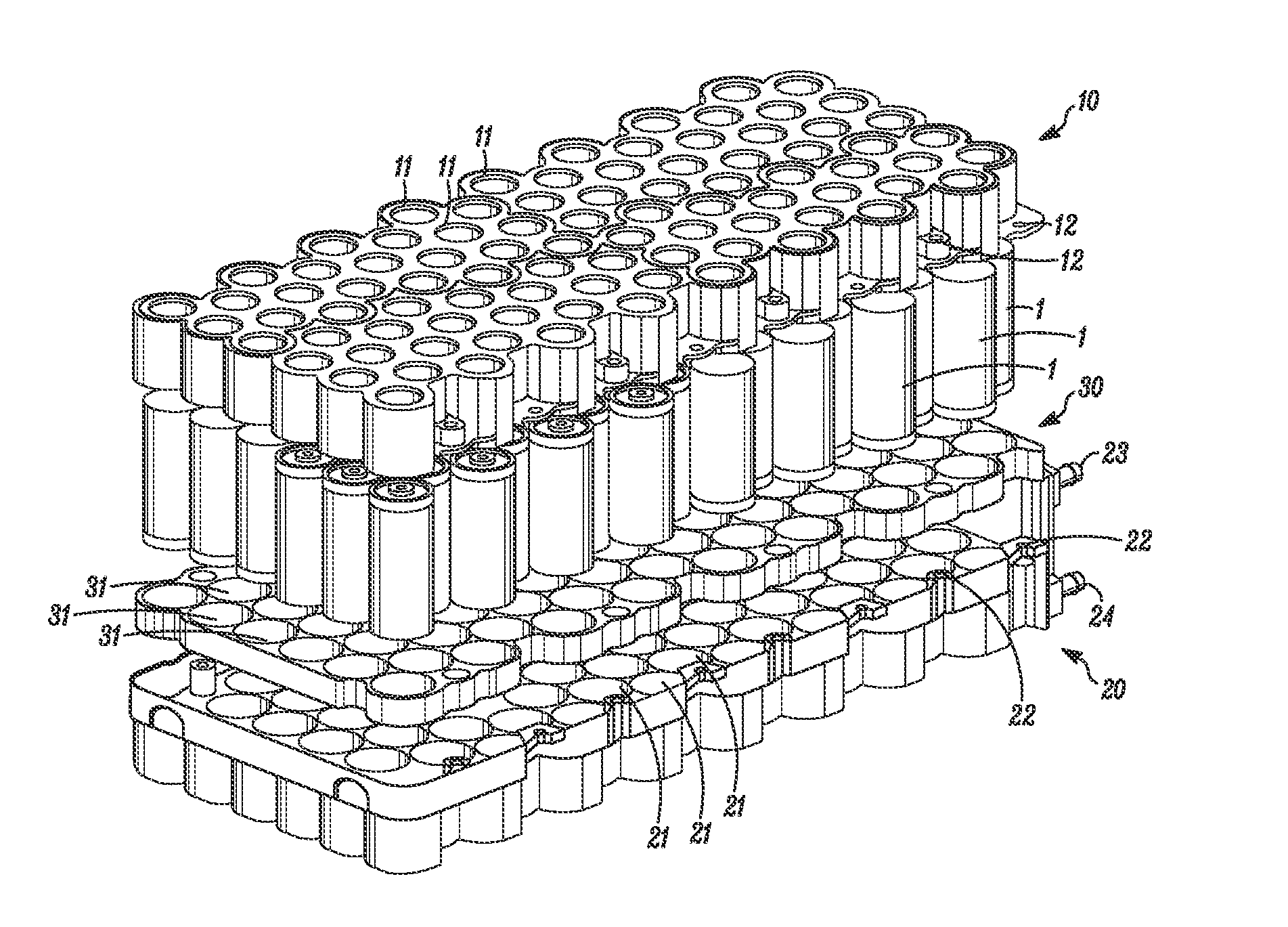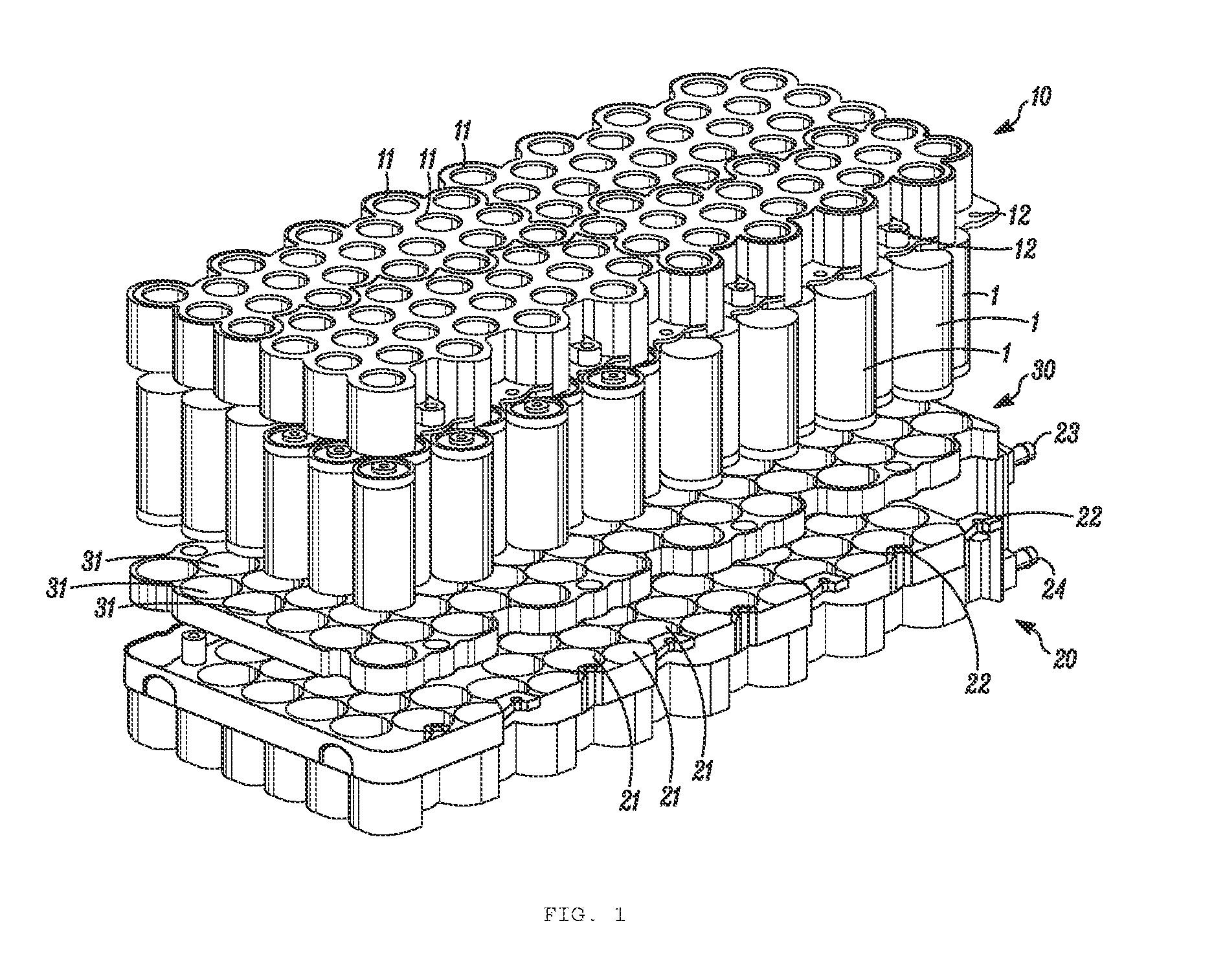Fixing battery cells in place by compressed cell fixture
- Summary
- Abstract
- Description
- Claims
- Application Information
AI Technical Summary
Benefits of technology
Problems solved by technology
Method used
Image
Examples
Embodiment Construction
[0017]FIG. 1 is a perspective view of a cell block consistent with embodiments of the disclosure, in a drawn out manner to show individual components of the cell block.
[0018]Here, reference symbol 10 refers to an upper cell carrier, which may also be referred to as a first cell carrier, Reference symbol 20 refers to a lower cell carrier, which may also be referred to as a second cell carrier. Reference symbol 30 refers to a cell fixture.
[0019]The upper cell carrier 10, the lower cell carrier 20, and the cell fixture 30 each have openings 11, 21, and 31, respectively, through which and / or into which cells 1 are inserted. Whereas the cells 1 can be inserted through the openings 31, the openings 11 and 21 of the two cell carriers 10 and 20 are closed at one side or provided with a reduced radius so that the cells 1 are held by the cell carriers 10 and 20 and would not slide through the openings 11 and 21.
[0020]In some embodiments, the two cell carriers 10 and 20 are made of a synthetic...
PUM
 Login to View More
Login to View More Abstract
Description
Claims
Application Information
 Login to View More
Login to View More - R&D
- Intellectual Property
- Life Sciences
- Materials
- Tech Scout
- Unparalleled Data Quality
- Higher Quality Content
- 60% Fewer Hallucinations
Browse by: Latest US Patents, China's latest patents, Technical Efficacy Thesaurus, Application Domain, Technology Topic, Popular Technical Reports.
© 2025 PatSnap. All rights reserved.Legal|Privacy policy|Modern Slavery Act Transparency Statement|Sitemap|About US| Contact US: help@patsnap.com


